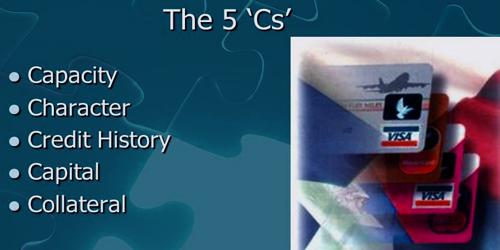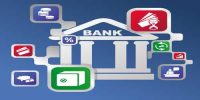Five-C’s of creditworthiness: A method used by lenders to determine the credit worthiness of potential borrowers. It is a system used by lenders to gauge the creditworthiness of potential borrowers. The system weighs five characteristics of the borrower, attempting to gauge the chance of default. Creditworthiness is an evaluation of how deserving a loan contender is to get a loan sanctioned in his favor.
The five C’s of creditworthiness:
(1) Character: It refers to the reputation of the prospective borrower in meeting the obligation of the bank upon maturity. This includes certain moral and mental qualities of integrity, fairness, responsibility, temperance, trustworthiness, industry and the like credit character is a relative matter. If you want a loan for your business, the lender may consider your experience and track record in your business and industry to evaluate how trustworthy you are to repay.
(2) Capacity: It refers to the ability of the potential borrowers of repaying the debt when it falls due and is indicative of the borrower’s competency to utilize the loan profitably. This is a very important variable of credit analysis as the customer’s ability to repay is essentially dependent upon his earning capacity. The lower your ratio, the more confident creditors will be in your capacity to repay the money you borrow
(3) Capital: Capital refers to your net worth — the value of your assets minus your liabilities. It represents the general financial position of the potential borrowers firm with special emphasis on tangible net worth and profitability. The net worth figure in the business enterprise is the key factor that governs the amount of credit that would be made available to the borrower.
(4) Collateral: It is represented by assets that may be offered as a pledge against loan extension. Collateral thus serves as a cushion or shock absorber if one or several of loan maturity. Collateral in the form of pledged assets serves to compensate for a deficiency in one or several of the three Cs.
(5) Condition: It implies economic and business conditions that affect the borrower’s ability to earn and repay debt and that are beyond the control of borrower. Economic conditions include all these factors, which have to bear on economic processes of production, distribution, and consumption.
















